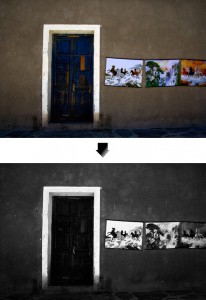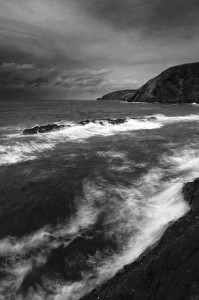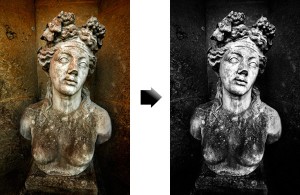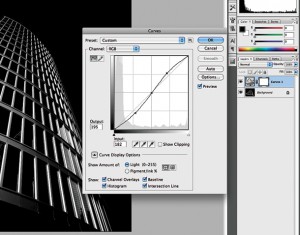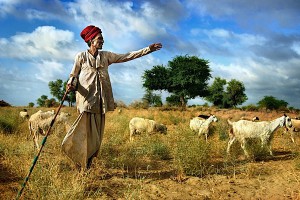Tonal Contrast / Shape and Form
In black and white photography, contrast is measured high, normal or low. A high contrast photograph comprises primarily of white and black with few or no middle gray tones. Lets take a white policeman in a black uniform against a dark background is an example of high contrast. A low contrast scene has colors or tones, which highlight shadows, have very little difference. In other words all colors within the scene have similar appearance. A white sailor in a white uniform against a white background is a prime example of low contrast. Most scenes people photograph have normal contrast. Of course there will be elements within the scene that are very light or very dark and many tones that reproduce various tones of gray.
In black and white photography, high contrast expresses a sense of hardness and is a characteristic of strength and power. Low contrast conveys a sense of softness and is a characteristic of gentleness and mildness.
Shape and form are two very important visual elements. Every object in a photograph has both shape and form. Shape is how the subject appears in two dimensions. A silhouette is an example of a shape in a photo.
Form is how the subject looks in three dimensions. Photos are two dimensional and photographers have the challenge of depicting three dimensional objects (their subjects) in a two dimensional form (the photo).
Black and white photos draw the attention to the shadows and flowing lines that portray form. A key tip to make your subject look three dimensional is the lighting. Side lighting reveals form by casting shadows on the subject. Front and backlighting obscure it.
When looking for a good shot, look beyond the colors in a scene and instead focus your attention on the shapes. Arrange them in a way that emphasizes the most interesting aspect of the shape, or creates an intriguing composition of different shapes. I hope this post series has helped you gain some knowledge on black and white photography. Now go get your camera and start shooting!
The photo above uses tonal contrast to create a dramatic scene. The light tones of the door frame and the paintings have created an impressive image.
If you still want to learn more tips on how to create a stunning black and white photo, here is a youtube link to learn more. How to edit great black and white photos
